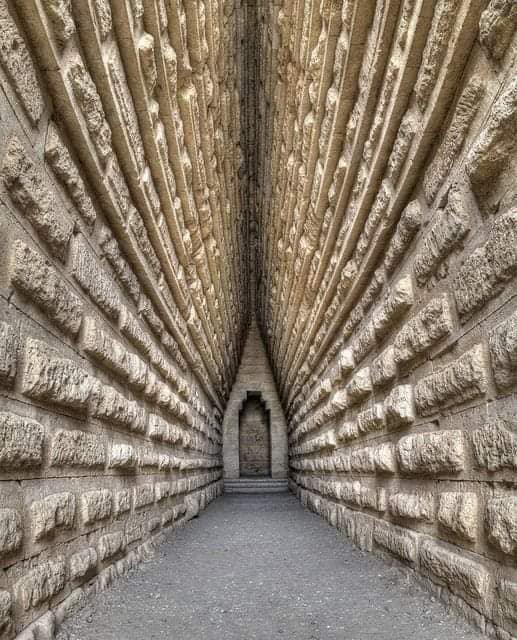Nestled in the heart of modern-day Kerch lies an extraordinary testament to the cultural fusion between ancient Greek colonizers and the indigenous Scythian tribes. The Royal Kurgan, an awe-inspiring burial mound dating back to the 4th century BCE, stands as a silent witness to the grandeur and influence of the once-powerful Bosporan Kingdom. This remarkable structure represents not only an architectural feat but also a historical milestone in the blending of two distinct civilizations.
The Birth of a Cross-Cultural Legacy
Approximately 2,700 years ago, Greek settlers began establishing colonies along the Crimean Peninsula, an area already rich with the traditions of the local Scythian people. One of these traditions was the construction of kurgans—large burial mounds built to honor their nobility. These kurgans were not only funerary monuments but also significant markers of social and cultural identity. As Greek settlers integrated into the region, they absorbed elements of Scythian culture, culminating in a unique fusion of practices and artistry.

In the ancient Greek colony of Panticapaion, now known as Kerch, one particular burial mound would become the pinnacle of this cultural synthesis: the Royal Kurgan. This monumental structure was conceived and constructed during a time when Greek and Scythian influences converged, leaving behind a lasting legacy of their coexistence and shared innovations.
A Marvel of Ancient Engineering
The Royal Kurgan’s imposing size and intricate design illustrate the engineering prowess of its creators. Rising nearly 20 meters high, the mound spans an impressive base perimeter of approximately 250 meters. At its core lies a 36-meter-long corridor, known as a dromos, which leads to a rectangular burial chamber. The chamber’s construction showcases the meticulous craftsmanship of its builders, who used expertly cut yellowish limestone blocks to form the structure’s core. This was then topped with a 17-meter layer of earth and stones, creating a seamless and enduring monument.
The dromos and burial chamber were designed not only for functionality but also for aesthetic appeal. The precision with which the limestone blocks were cut and assembled reflects an advanced understanding of engineering principles. Such sophistication would have required not only skilled labor but also the collaboration of architects and artisans well-versed in both Greek and Scythian techniques. The Royal Kurgan thus stands as a testament to the ingenuity of its builders and the resources of the society that commissioned it.
A Tomb Fit for Royalty
The grandeur of the Royal Kurgan’s construction suggests it was intended for a ruler of significant power and influence within the Bosporan Kingdom. The wooden sarcophagus discovered within the burial chamber adds to the evidence of its royal origins. Unfortunately, the tomb’s treasures and artifacts were plundered long before its formal excavation in the 19th century. Despite this loss, the structure’s sheer scale and intricacy continue to speak volumes about the societal and cultural priorities of the Bosporan elite.
The Bosporan Kingdom: A Forgotten Empire
For nearly nine centuries, from the 5th century BCE to the 4th century CE, the Bosporan Kingdom flourished as a dynamic cultural and economic hub. Positioned at the crossroads of the classical Greek world and the nomadic tribes of the Eurasian steppes, the kingdom served as a vital bridge between these diverse cultures. It was a place where ideas, traditions, and goods flowed freely, fostering a unique environment of mutual influence and collaboration.
The Bosporan Kingdom was remarkable for its ability to harmonize Greek and Scythian elements, creating a hybrid culture that thrived for centuries. The Royal Kurgan is one of the most tangible symbols of this synthesis. While it draws heavily on the Scythian tradition of constructing monumental burial mounds, its architectural features—including the use of limestone blocks and the dromos design—are distinctly Greek. This blending of styles reflects the kingdom’s role as a cultural crossroads and highlights the adaptability and creativity of its people.
Living Legacy
Although the artifacts that once filled the Royal Kurgan are lost to history, the site continues to captivate archaeologists, historians, and visitors alike. Its enduring presence provides invaluable insights into the interactions between Greek settlers and indigenous populations. Each stone and architectural detail offers a glimpse into the lives and aspirations of those who lived during this fascinating period of human history.
The Royal Kurgan’s significance extends beyond its physical structure. It serves as a monumental reminder of the Bosporan Kingdom’s influence and the lasting impact of cultural exchange. The tomb’s design, blending Greek and Scythian elements, underscores the interconnectedness of ancient societies and the ways in which they shaped one another’s identities.
A Window to the Past
Today, the Royal Kurgan remains one of the most striking ancient monuments in the region, silently guarding the secrets of a civilization that bridged two worlds. Its imposing form and intricate design continue to inspire awe and curiosity, inviting modern audiences to explore the rich history it represents. While its treasures may have been lost to time, the kurgan itself endures as a powerful symbol of cultural exchange and architectural achievement.
This magnificent burial mound not only embodies the grandeur of the Bosporan elite but also provides a unique perspective on a pivotal era of human history. The Royal Kurgan invites us to reflect on the enduring legacies of ancient civilizations and the ways in which cultural interactions have shaped the world we know today.
As we stand before this monumental structure, we are reminded of the rulers who left an indelible mark on the landscape of ancient civilization. The Royal Kurgan is more than a tomb; it is a testament to the ingenuity, ambition, and collaborative spirit of a bygone era. Its continued presence in the modern world is a tribute to the enduring power of cultural heritage and the stories it tells about our shared past.





